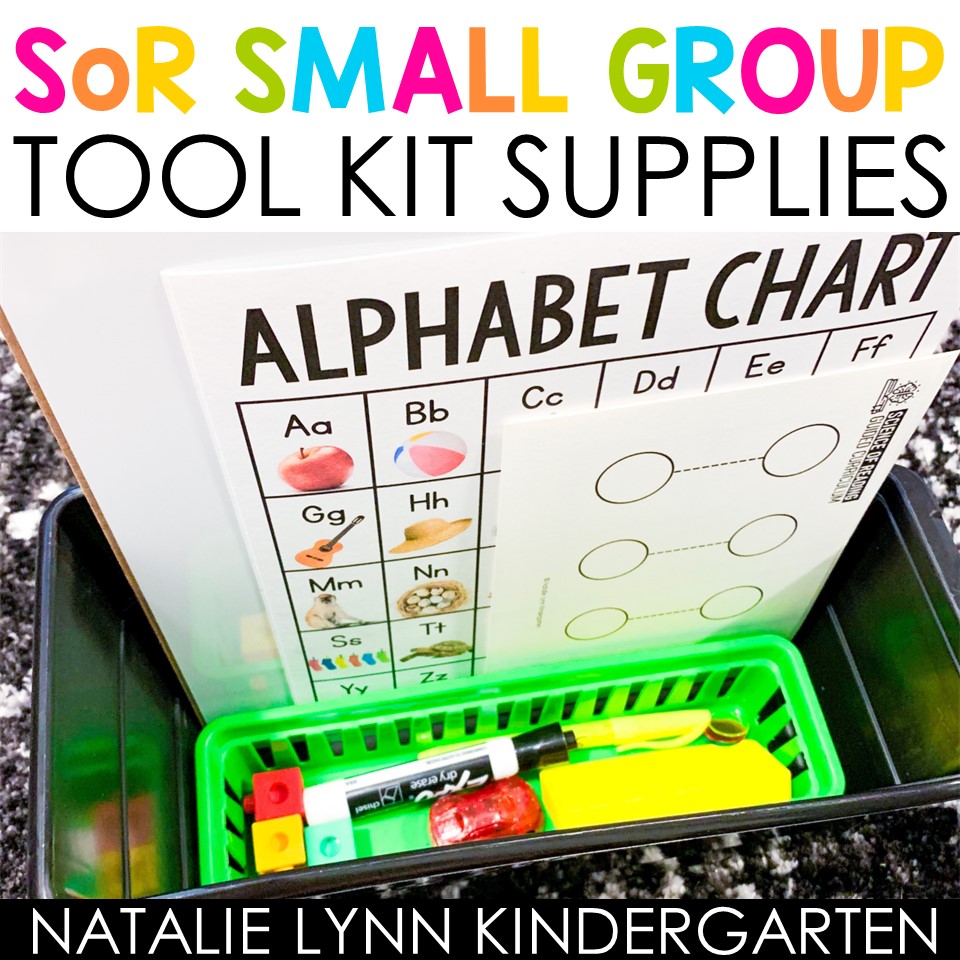
In this blog post: Find ideas for how to organize your small group guided reading table, what to include in your student supplies, and download the free Science of Reading Small Groups Toolkit to set your students up for success.
As you are planning for your Science of Reading small groups this year, you might be wondering how to best organize and set up your small groups teacher table. After all, this will be your hub for a good chunk of the day!
In this blog post, I will give you ideas for setting up your reading small groups table, organizing student supplies, and how to use the free Science of Reading Small Groups Toolkit for success.
What are Science of Reading small groups?
Science of Reading small groups would take the place of your traditional guided reading time. This is when you are using a research-based Science of Reading curriculum to teach students to read.
Typically, this looks like bringing a small group of 4-6 students to your table for a short 15-20 minute lesson. The lesson would include a warm up, phonics focus, blending practice, reading decodable texts, and writing words and sentences.
As you set up your Science of Reading small groups table, you will want to keep in mind:
- How many students you will have in each group
- What supplies you will need throughout the lesson
- How students will get access to supplies throughout the lesson
- How much time you want students to spend transitioning
So now that you know what to consider, let’s look at how to best set up your small groups table.
This blog post contains Amazon Affiliate links. As an Amazon affiliate, I earn from qualifying purchases.
Setting Up Your Small Groups Table
When I set up my guided reading table in Kindergarten, I knew that I wanted everything we might need to be easily accessible to both me and my students.
I didn’t want to waste any time on transitions, so I kept all student supplies at my table. When I called a small group, they would leave their center where it was and come right to the table to get started. After our guided reading group, they would go right back to their center and I was ready to meet with the next group.
As you can see below, the best way I found to do this was with student book bins. These book bins held everything my students might need for small guided reading groups.

At the beginning of our Science of Reading small groups time, I set those book bins out at my table. They also acted as a type of divider for students, which was nice when it came to reading and writing.
In those colorful drawers on the table, I kept magnetic letters for our sight word routine.
Now, I may not do this as a part of our Science of Reading small groups, but you could still use those drawers to house any student supplies you don’t want them to always have access to, but you still want to easily pass out.
For example, you could use these drawers if you wanted to map and build words with magnetic letters during your small group.
They are easy to pass out and easy to clean up.
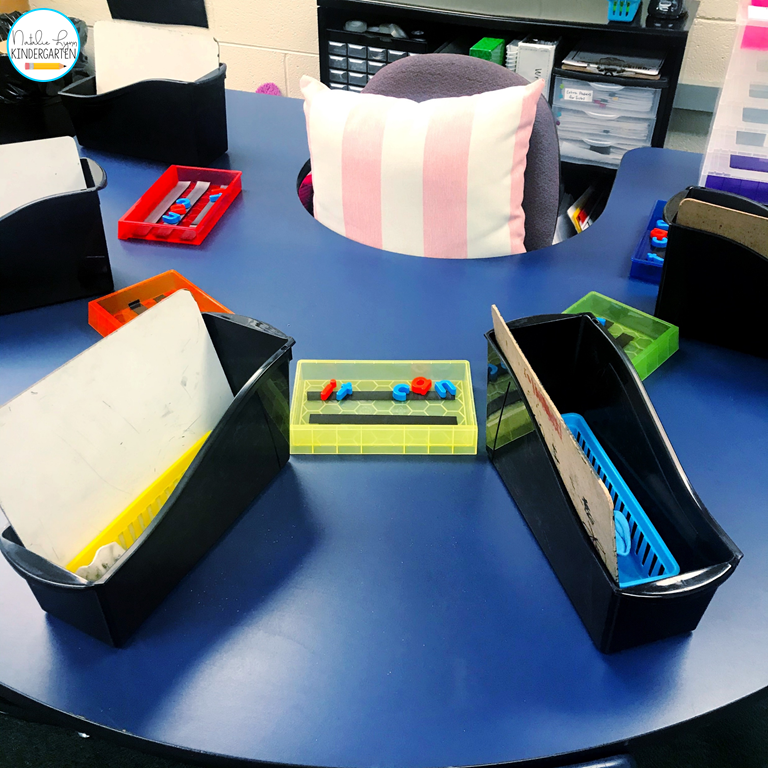
Side note: I used magnetic tape in those drawers, but I wouldn’t waste your time on that unless you used the thick tape and hot glued it down. The thin tape didn’t hold the magnets, but the thick tape wouldn’t stick well.
Having access to all of the supplies we could possibly need at our fingertips definitely made our Science of Reading small groups run SO much more smoothly.
When we were done with guided reading small groups for the day, I simply put the student book bins on the top of this bookshelf for easy storage.
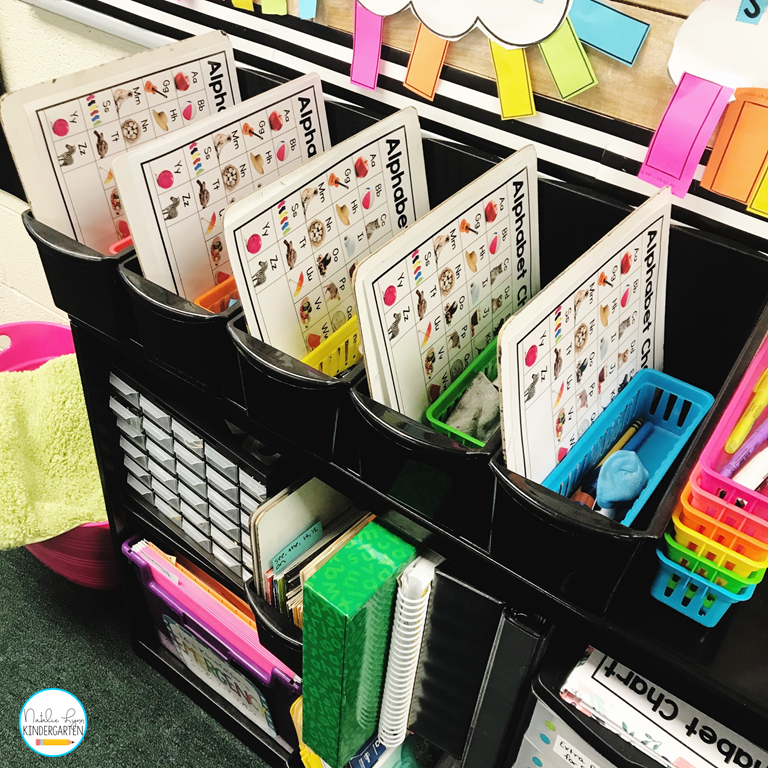
To read more about organizing your Science of Reading decodable readers, curriculum, and small groups binder, check out these blog posts:
- How to Organize the Science of Reading Guided Curriculum
- Free Science of Reading Small Groups Binder
Student Small Group Supplies
Now that I’ve shown you how I organize student supplies at my small groups table, let me show you what I would keep in those book bins. These are all things that I wanted students to have access to throughout our small groups.
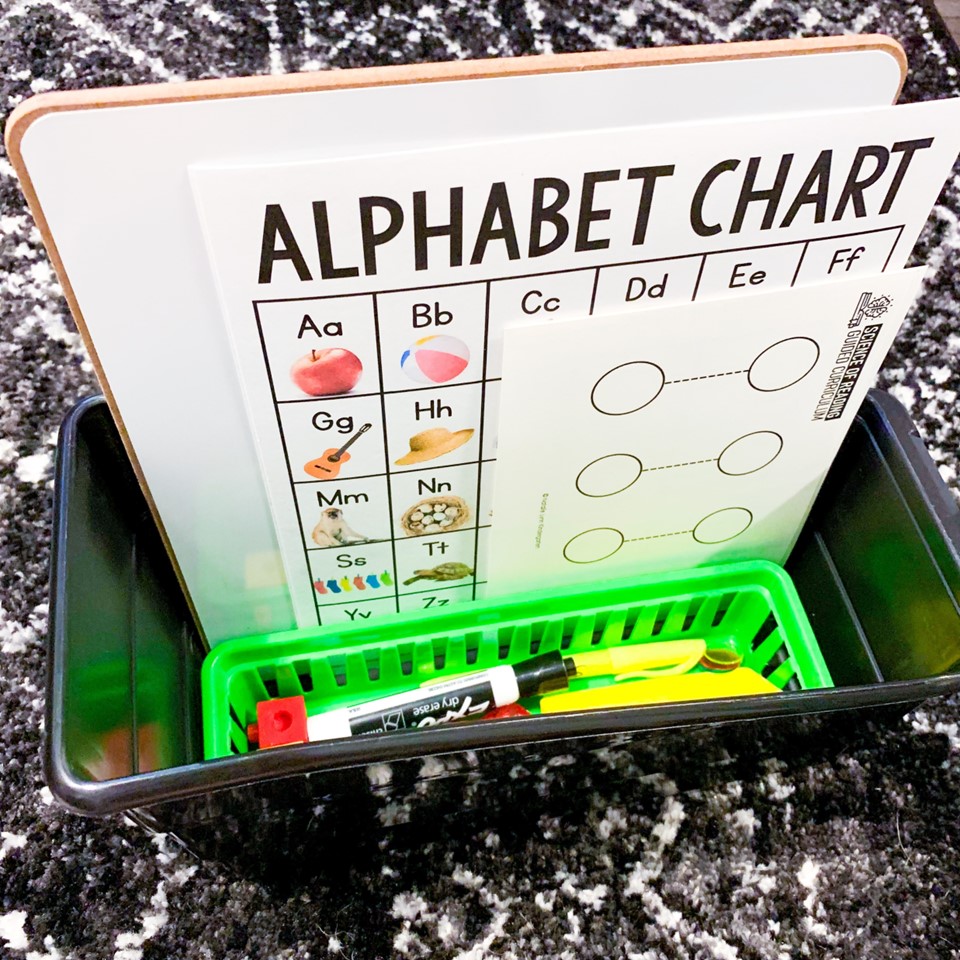
In each book, I kept a dry erase board, an alphabet chart and mats (grab these for free in the Small Groups Toolkit below, and pencil trays with smaller supplies.
I go a little crazy for rainbow order, especially in the classroom, so I did of course use rainbow pencil trays. If you get rainbow supplies, it’s also easy to see which bin each supply gets put back in.

In those plastic pencil trays, I would keep:
- Highlighters
- Pencils
- Dry erase markers
- Erasers
- Cubes
- Chips
- Pull back cars for blending words
- Ten frame pop its for segmenting words
This item is completely unnecessary, but I thought they were just too much fun not to include! These mini paint trays are perfect for mapping and writing words.

These trays are not big enough for magnetic letters, but really, I wouldn’t want to waste time during my small groups pulling out magnetic letters too.
To use these mini paint trays, you will say a word. Students can use chips or pom-poms to map each sound (pom-poms fit perfectly in the wells!).
Then, they can write the word using a dry erase marker on the tray. These trays easily erase!
Free Science of Reading Small Groups Toolkit
This free Science of Reading Small Groups Toolkit contains printable resources you can use in your small guided reading groups and beyond.
Let’s take a closer look at each piece included and how you might use it in your Science of Reading small groups.
Alphabet Charts with Real Photos
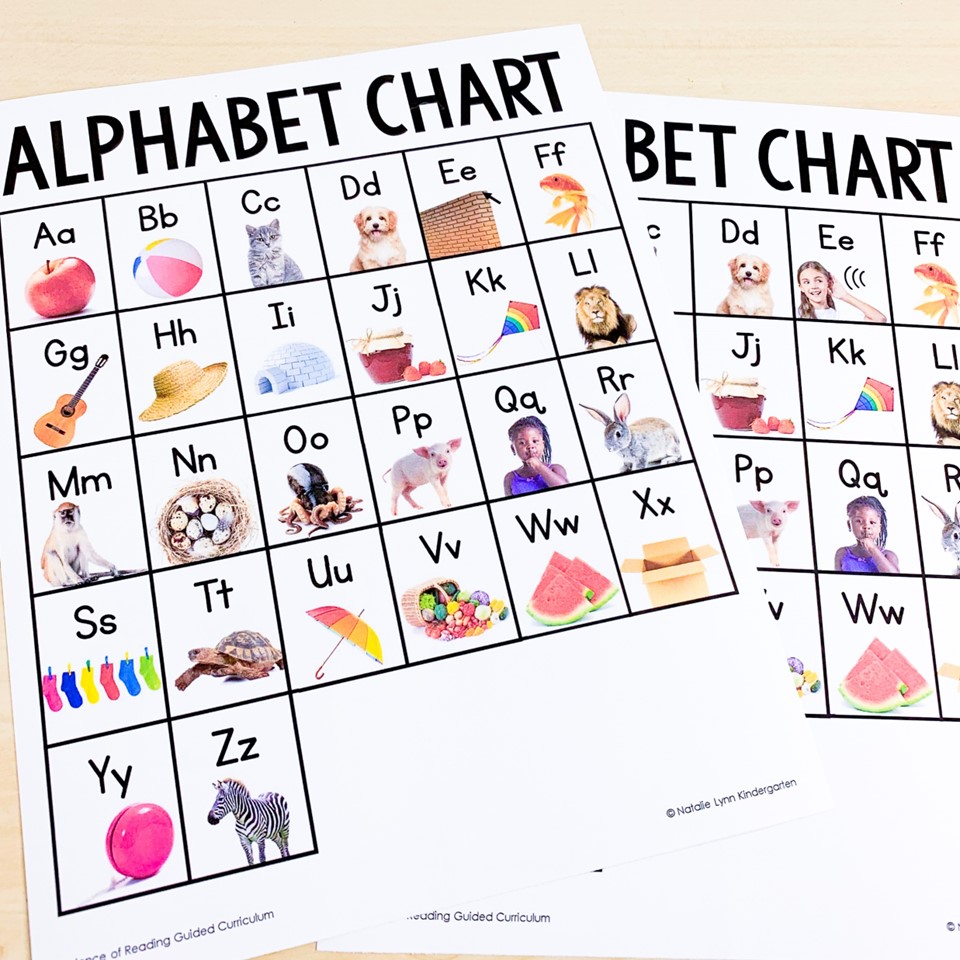
You can use alphabet charts in so many different ways during your small guided reading groups including: with an alphabet chart routine, to search and find letters or sounds as a warm up, or as a resource during guided writing.
In the free Science of Reading Small Groups Toolkit, there are two free alphabet charts with real photos included. The only difference between these two alphabet charts is the key image for the letter e – edge or echo.
These alphabet charts also match up to my Real Photo Alphabet Posters.
If you print one of these alphabet charts at poster size, you can use it in the morning for an alphabet routine.
Letter Formation Charts
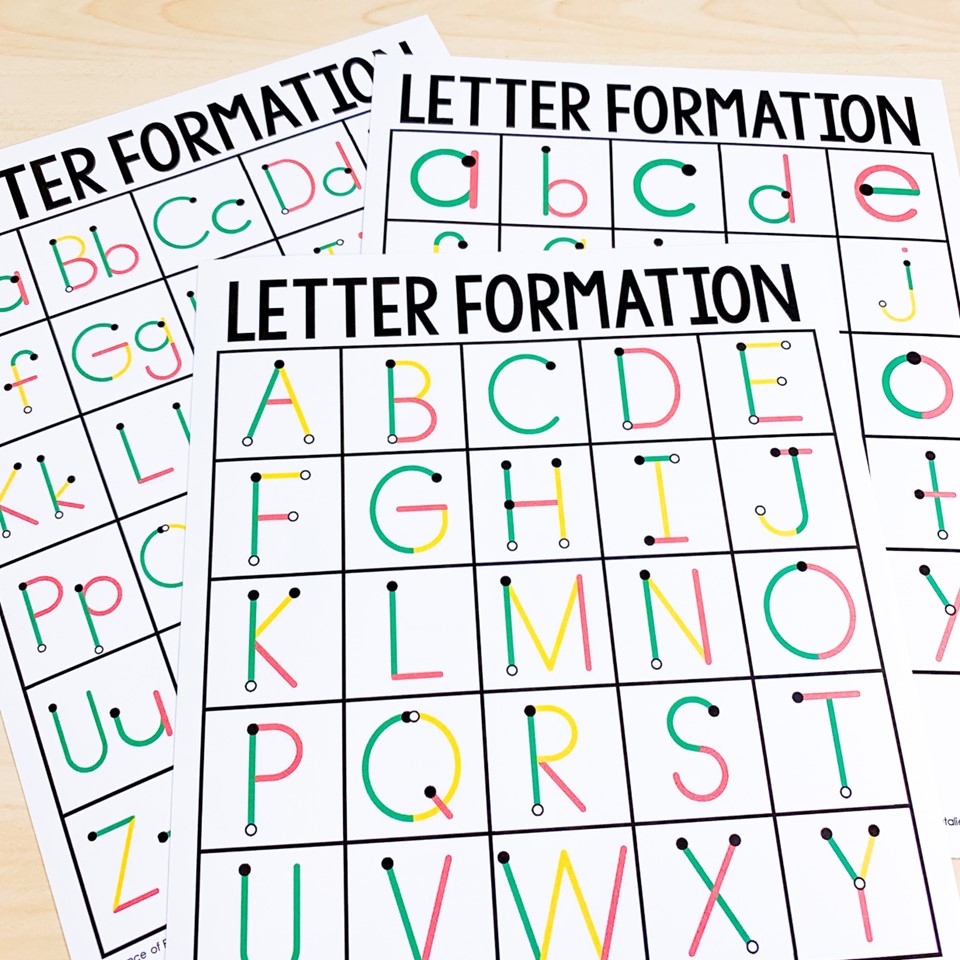
These free letter formation charts show students the proper handwriting strokes for each letter. You have the choice of keeping the uppercase and lowercase letters separate, or having them together on one chart.
You can use this chart during your alphabet lesson with pre-readers when you focus on letter formation during the guided writing portion.
These would also be a great tool during the encoding or guided writing portion of your regular Science of Reading small groups, especially if you have students with weak handwriting or reversals.
Alphabet Rings
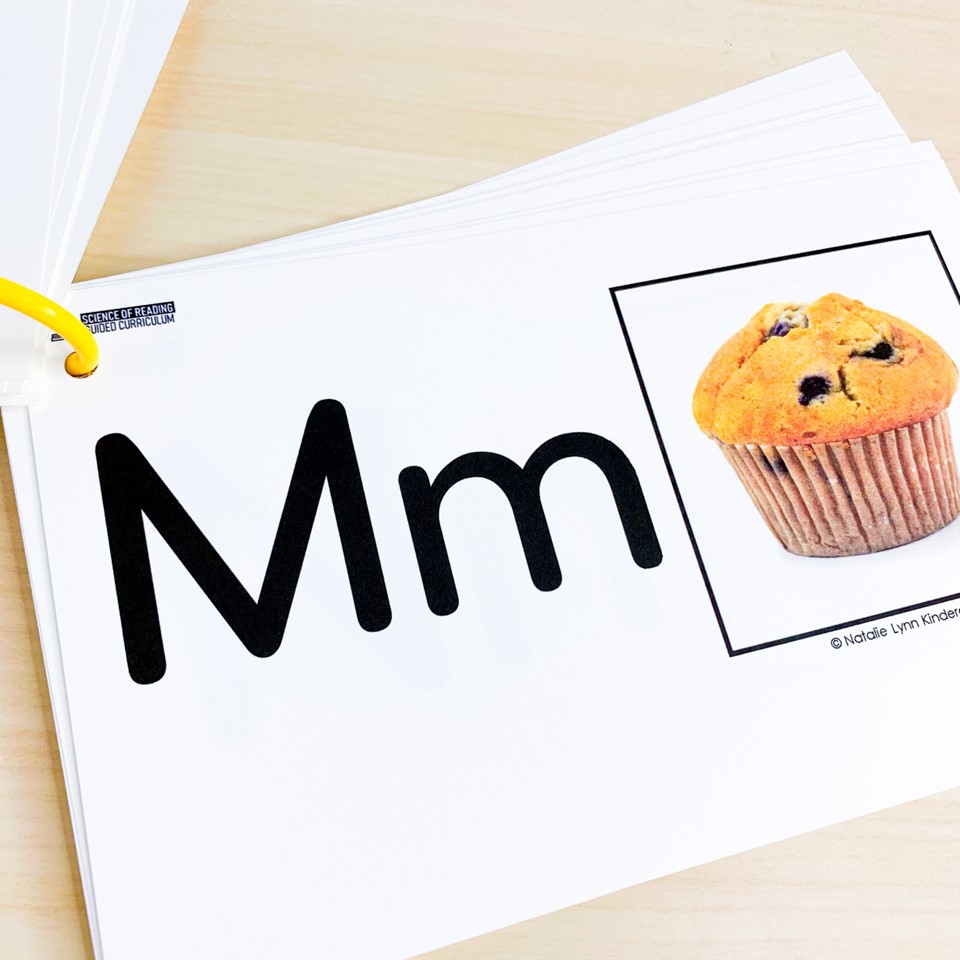
You can use these alphabet cards with real photos as alphabet flash cards or as a teaching tool when you introduce or review letters.
However, my favorite way to use these free alphabet cards is to create a letter tracing book. Simply hole punch and place on a binder ring!
Students can trace the letter with their finger as they say its name. Then, they can say the picture. Finally, they will point to or trace the letter again as they say the sound.
If you don’t have room to keep these in your student book bins, you can have an extra bin at your small groups table to hold them.
These are also wonderful to keep around as a quick intervention activity if you ever have classroom volunteers or older students come in.
Working with Words
The next pieces included in the free Science of Reading Small Groups Toolkit are half-page mats to help you work with words. You can laminate these mats for durability, and then use them throughout the lesson.
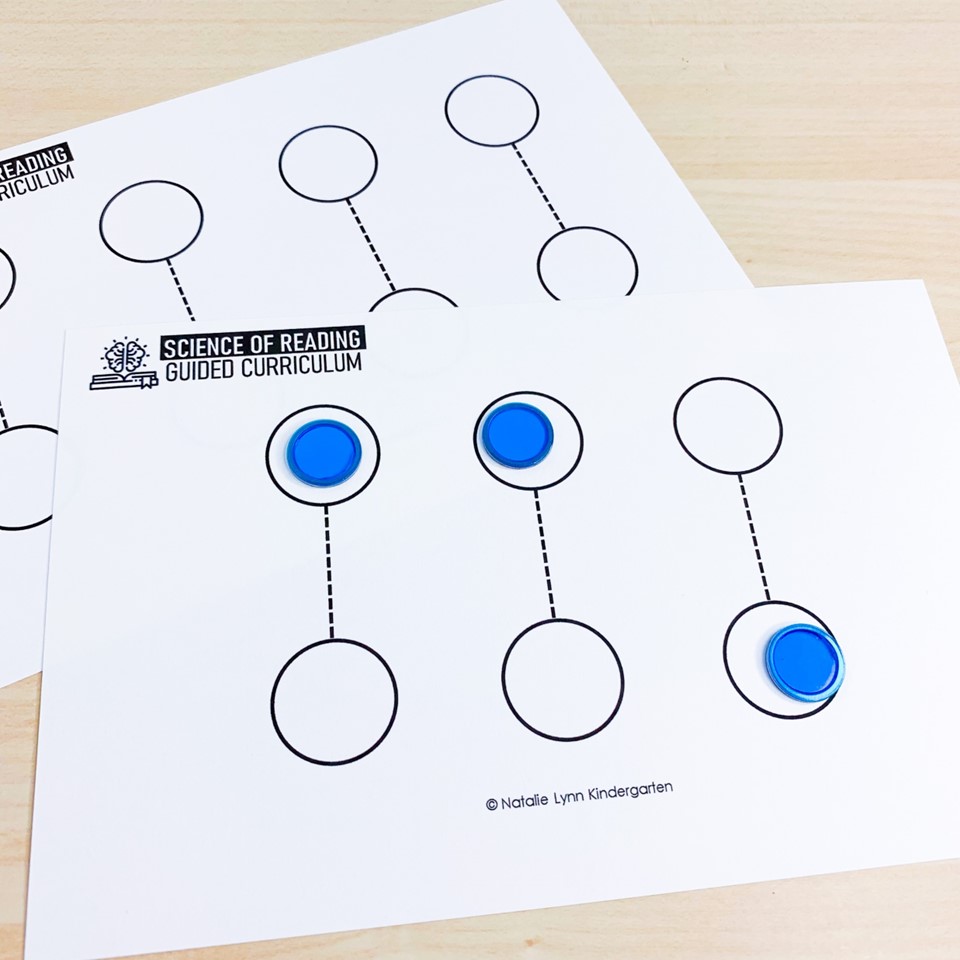
For these sound segmenting mats, just grab plastic chips! These are a wonderful phonemic awareness activity during your small groups.
You will say a word and have students repeat. Then, they can push up a chip as they say each sound. This makes it easy to count how many sounds are in a word!
If you use magnetic chips, students can then swipe the chips with a magnetic wand as they blend the word back together.
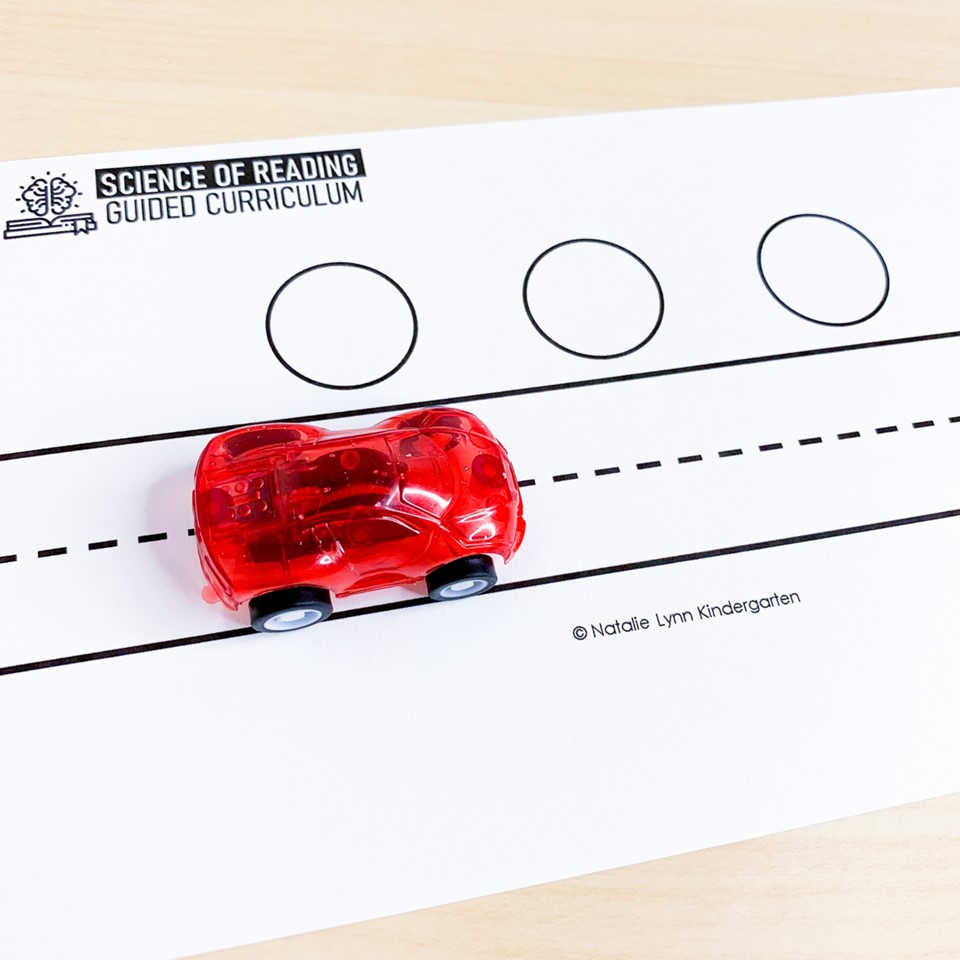
For these blend and drive mats, you just need to grab toy cars! You will say a word sound-by sound, or give students the letters on the mat to read.
They will drive the toy car down the road as they blend those sounds together.
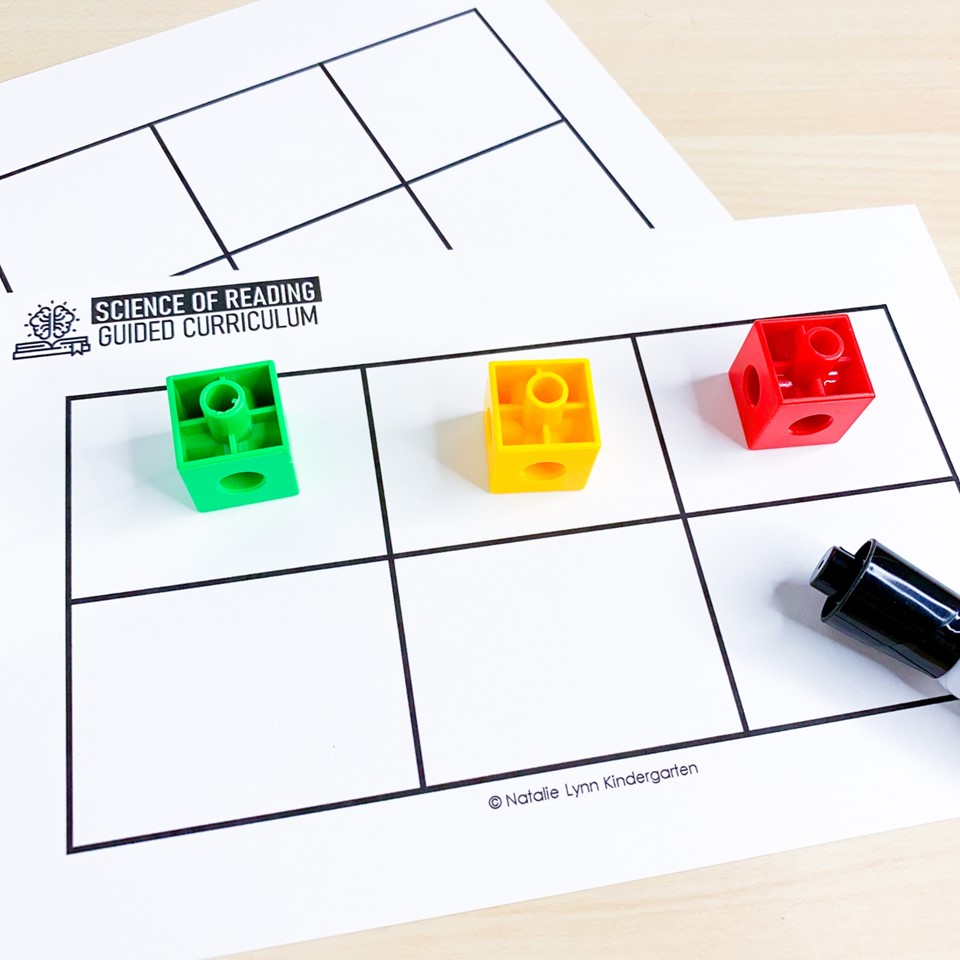
These Map It Graph It mats can be used to practice encoding words during the guided writing portion of your lesson.
You will say a word and have students repeat it. They will put a cube or counter in each box to represent the sounds. Then, they will write the letters needed to write sounds in the boxes below.

Working with multisyllable words can be tricky! These Multisyllabic Word mats help students divide a word into its syllables, write each syllable, and then put those syllables together to write the whole word.
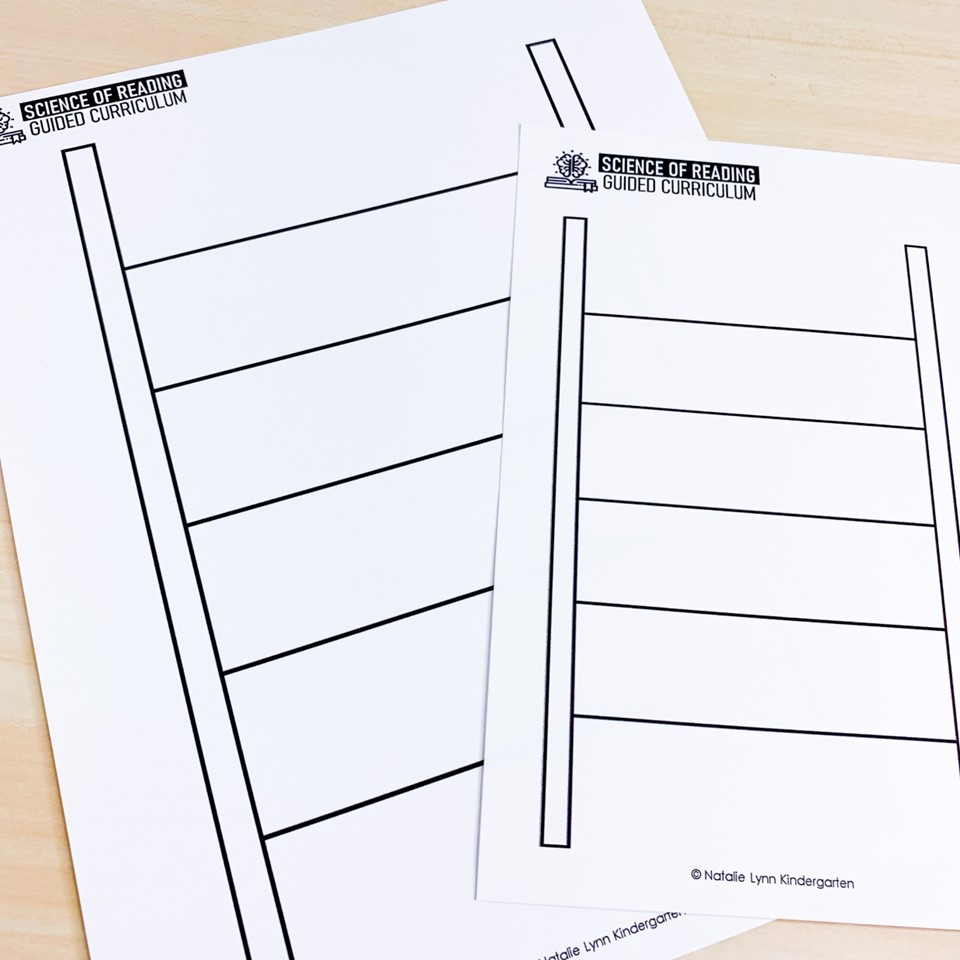
These word ladder templates can be used for building word chains during your Science of Reading small groups. Students can build each word with magnetic letters or write it with a dry erase marker as they move up the ladder rungs.
You can grab all of these printable tools for you small groups here:
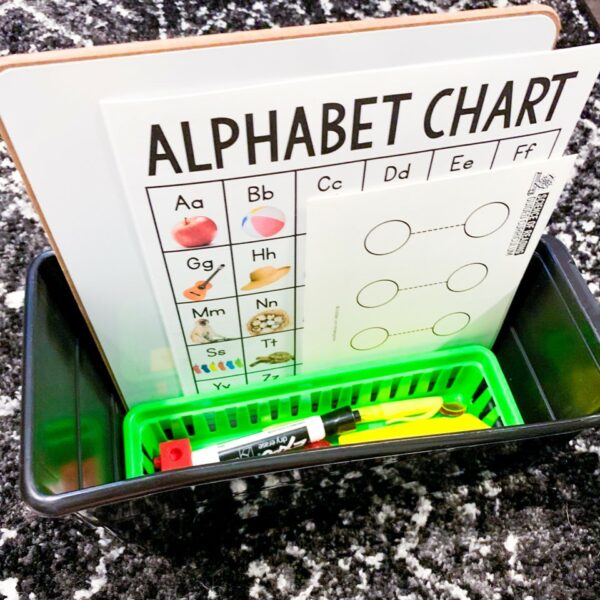
Do you love free stuff?
SoR Small Groups Toolkit
Grab a free Science of Reading Small Groups Toolkit to help set up your student supplies at your small groups table.



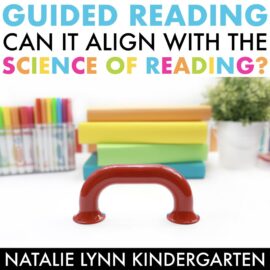


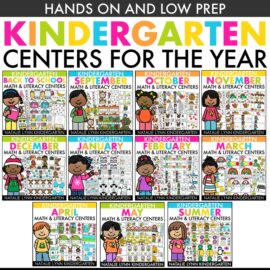
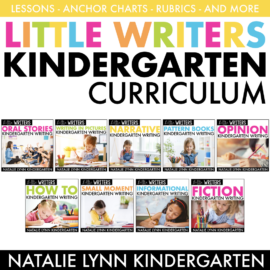
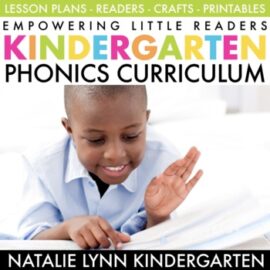
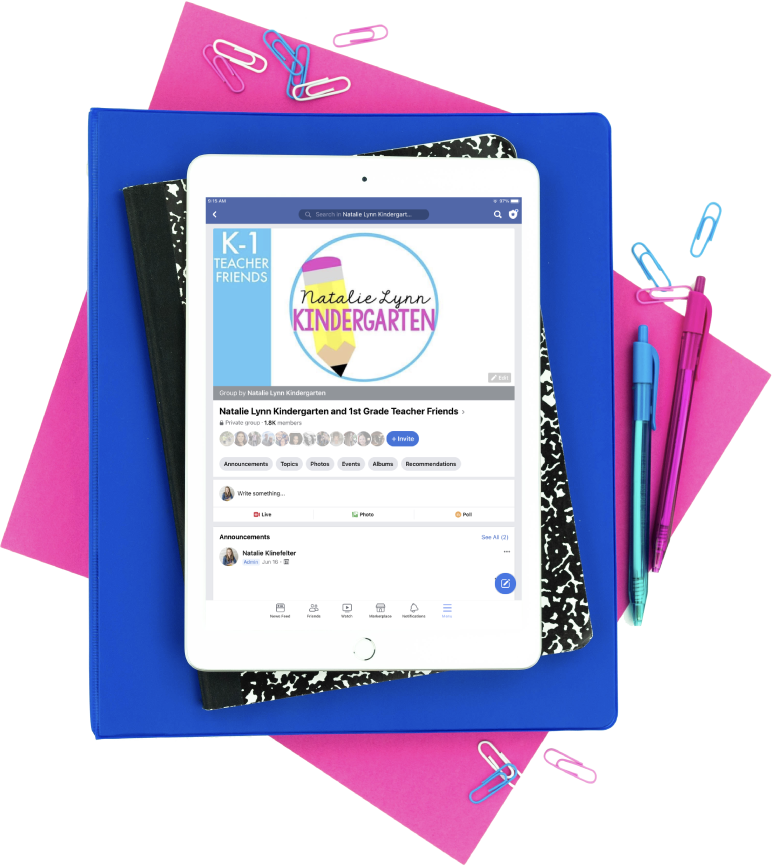

I am a new kinder teacher with one year behind me. I have struggled to know what to do in small groups and how to organize them. I’ve read SO MANY ideas, which were helpful, but this one really put it all together for me. I thank you from the bottom of my heart.
I’m so glad it was helpful, Janice! Good luck on your first year! 🙂
Just the ideas I had been thinking about. this is all on point and ready to use. I am an experienced teacher.
Thank you, Judy!
Thank you! all so useful!
all so useful! thank you!
Where can I find the letter formation templates with upper and lowercase letters with different colored lines (red, yellow, green)? I can not find a link.
Hi! They are a part of the Science of Reading Small Groups toolkit free download that’s at the end of this blog post. 🙂
These look great!
Hello, I was looking for your free letter formation charts. Not sure if we had to request through email or not. Please advise. Thank you!
They are a part of the free Small Groups Toolkit download 🙂